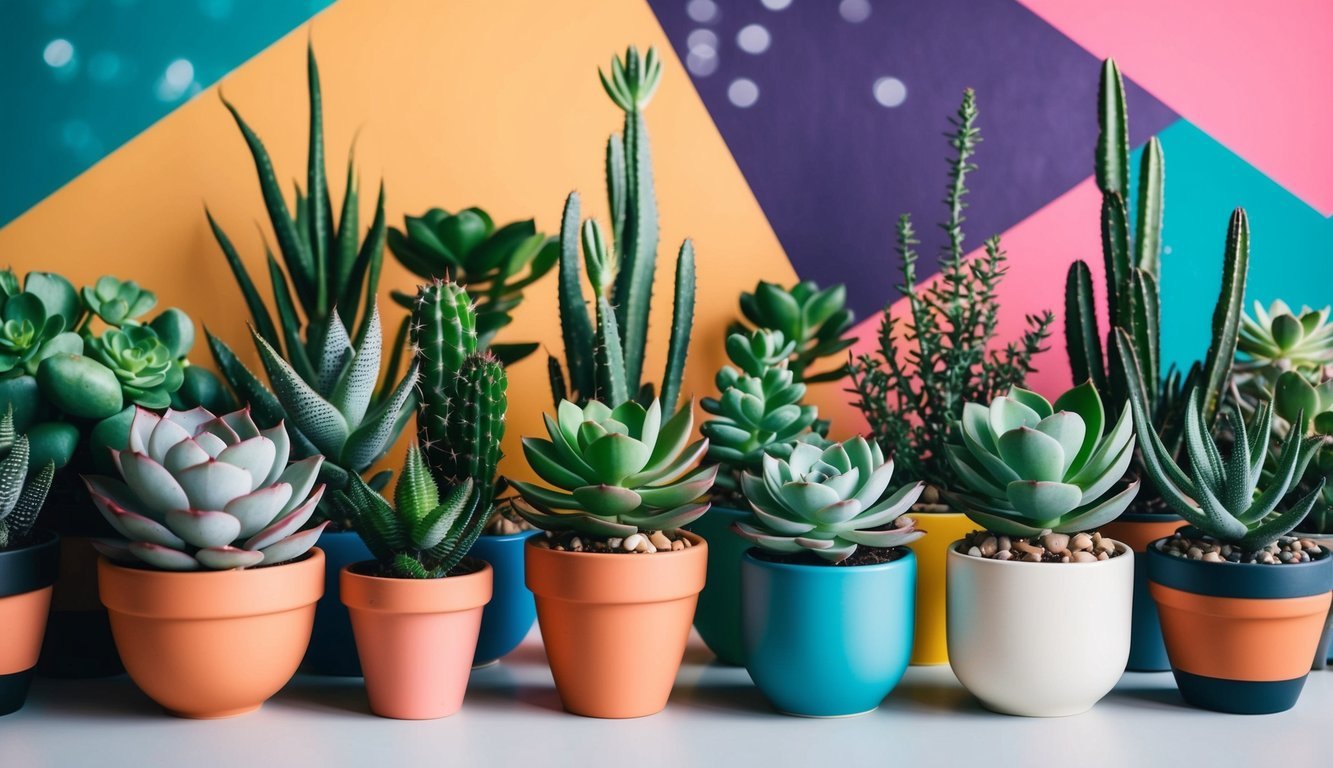
Succulents are beloved for their stunning colors, minimal upkeep, and ability to thrive in dry conditions, making them a fantastic addition to any garden or indoor space.
Nonetheless, proper care is vital, as missteps in their maintenance can seriously affect their health.
Gardening expert Matt Dursum highlights nine frequent mistakes that could be detrimental to your succulents and provides straightforward solutions to prevent these issues.
In arid climates like California or Texas, succulents often become a top choice for gardening enthusiasts due to their visual appeal and straightforward cultivation process.
These hardy plants, characterized by their ability to store water in their leaves and stems, include favorites like aloe, echeveria, jade plants, and agave.
Common Care Errors
Although succulents are tough, each species has its own unique set of preferences regarding care.
Understanding these distinctions is crucial for their thriving.
Here’s a breakdown of nine ways you may be unknowingly harming your succulents, along with tips on how to correct these errors.
1. Overhydration
Overwatering is perhaps the most common pitfall for succulent owners.
Given their natural adaptation to dry climates, an excess of water can lead to serious issues like root rot.
Waterlogged soil encourages the development of rot, leaving the roots blackened and mushy due to bacterial or fungal infections.
This condition stifles the plant’s ability to absorb vital nutrients and moisture, often producing unpleasant odors.
- Gently take the succulent out of its pot and remove the excess soil.
- Lay the plant on its side.
- Use sterilized scissors to cut away any rotten roots but keep the healthy ones.
- Let the plant air out on a clean, dry surface in a dark area for a few hours.
- Dispose of the rotten roots away from other plants.
- Replant it in a new soil mixture.
2. Neglecting Species Specifics
To help your succulents thrive, it’s essential to know what species you are working with.
There’s an incredible variety out there, and each type has distinct environmental, light, and temperature needs.
Misunderstanding these differences could lead to improper care.
For example, aloe plants can withstand mild frost and thrive in bright sunlight, while others, like Spiderworts, prefer shadier spots.
Always check the label or conduct some research to tailor your care to the specific needs of your species.
3. Exposure to Chilly Temperatures
Many succulents originate from warm regions and may struggle with cold weather.
Leaving them outside in frigid temperatures for extended periods can make recovery difficult.
How well your plant recuperates from cold exposure largely hinges on the severity of the conditions it endured.
- If your succulent experiences mild frost, you can often restore it:
- Determine if your plant tolerates cold; some are more resilient than others.
- Quickly bring sensitive varieties indoors if you suspect frost damage or observe any color changes.
- Keep the affected plants away from harsh sunlight and place them in a warm, indirect light area to aid their healing.
- Watch for signs of wilting and browning.
Prune any dead parts using sterilized tools as new growth develops.
Adequate sunlight is essential for succulent growth.
A lack of light can lead to faded colors and stunted development.
While many succulents flourish outdoors in bright sunlight, some varieties prefer more shaded areas.
It’s crucial to understand the specific light requirements of your plants.
4. Inadequate Light Conditions
- High-light succulents include:
- Stonecrops
- Zebra Cactus
- Chinese Jade
- Aloe
- Conversely, some varieties prefer lower-light settings, where too much exposure can be harmful:
- Tavaresia
- Spiderwort
- Chandelier Plant
While many succulents enjoy the sun, overexposure can create problems.
Intense, direct sunlight may lead to leaf burn, indicated by discolored patches or brown spots.
Understanding how much light your plants need is key to their well-being.
Using the same soil for too long can deplete essential nutrients, adversely affecting even the slowest growing succulents.
Symptoms like yellowing leaves or reduced growth may suggest it’s time for a soil change.
Proper drainage is vital to prevent root damage due to soggy conditions.
5. Poor Soil Quality
For potted succulents, it’s beneficial to create a custom soil blend, mixing two parts organic potting soil, two parts coarse horticultural sand, and one part perlite to ensure excellent drainage.
Even though succulents are hardy, they still need proper nutrients to grow and bloom effectively.
Slow growth or yellowing leaves could signal a need for fertilization.
- Time your fertilization to coincide with the plant’s active growth phase.
Succulents don’t need elaborate fertilizers; a simple, balanced organic option will work wonders if used appropriately.
Just like any other plant, succulents can fall prey to pests, with mealybugs being a frequent offender.
These pests often leave behind a cotton-like residue on the leaves, as they feed on the plant’s nutrients and sap.
6. Pest Problems
- To manage a mealybug infestation:
- Isolate affected plants immediately to stop the spread.
- Use a cotton swab dipped in diluted rubbing alcohol to remove visible pests.
- Follow with insecticidal soap or neem oil to eliminate any remaining threats.
- Clean the surrounding area to remove stray insects and consider repotting if conditions are severe.
Planting succulents too closely together can lead to shading, competition for nutrients, and an environment suited for pests.
Close proximity can result in uneven growth, weakening your plants’ overall health and visual appeal.
7. Overcrowding Plants
To encourage robust growth, make sure your succulents have ample space between them.
This helps ensure they receive adequate light and minimizes the risk of pest infestations.
By tackling these common pitfalls, you’ll be on your way to cultivating a vibrant and thriving succulent garden.
Source: Epicgardening

